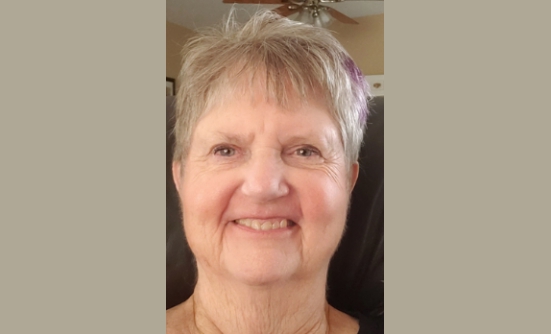For patients with multiple myeloma, medication adherence—continuing the treatment that has been recommended by the doctor and agreed to by the patient—is crucial to achieving the goals of therapy.
To ensure medication adherence, patients should be involved in the decision-making process about the selection of therapy and establishing the goals of treatment. The more involved patients are in this process, the more confident they will feel in their decision, and the more likely they will be to stick with their treatment. Research has shown that patients are more likely to adhere to therapy if they believe their treatment is right for them.1
People with multiple myeloma often have to continue treatment for the rest of their lives, so adherence to their medications is crucial. Patients are their own best advocates, so taking a proactive role in their own care can empower them while making a potentially lifelong treatment much more manageable.
What Is Multiple Myeloma?
Multiple myeloma is a complex cancer that forms in a type of white blood cells called plasma cells, which are an important part of the immune system and are crucial to fighting infection.2 Although multiple myeloma is incurable, it is highly treatable. Advances in treatment over the years have led to significantly improved survival in patients with multiple myeloma. But for multiple myeloma treatment to work, patients have to adhere to the treatment plans that they have decided on with their doctors, paying attention to the timing, dosage, and frequency of their medications.1 Taking medications as prescribed is critical to managing this disease.2
Many of the available treatment options for multiple myeloma may lead to a symptom-free life, so it’s important that patients and their doctors work together to determine a personalized treatment plan. This plan may include drug therapy, stem-cell transplant, a clinical trial, experimental therapies, and/or supportive care. Although several effective therapies are available to patients, the treatments are constantly advancing; several promising new therapies are in development, and new treatments are being approved and introduced often.
Deciding on a Treatment Plan
A treatment plan is tailored to each patient, based on factors such as the patient’s age, general health, lifestyle, and diagnostics, taking into account the effects a treatment will likely have on the patient.
Local therapies are treatments that fight the cancer without affecting the rest of the body, and are more often used in earlier-stage cancers.
Multiple myeloma can also be treated with systemic therapies. These drugs can be given orally or through intravenous infusion directly into the bloodstream, and can reach cancer cells anywhere in the body.
Systemic Therapy
A frequently used systemic therapy for multiple myeloma is Darzalex (daratumumab). Darzalex is a monoclonal antibody that works by binding itself to the CD38 protein, which is found on multiple myeloma cells.3 This binding is thought to kill cancer cells directly by helping the patient’s own immune system to identify, attack, and destroy them. Darzalex is used mainly in combination with other drugs, although it can also be used by itself in patients who have already received several other treatments for multiple myeloma.3
Darzalex is often given intravenously, which can cause a reaction in some people during the infusion or within several hours afterward. The symptoms can include coughing, wheezing, trouble breathing, tightness in the throat, a runny or stuffy nose, feeling dizzy or lightheaded, headache, rash, and nausea. Other side effects can include fatigue, back pain, and fever, but the risk of these reactions decreases with subsequent infusions.
It is critical that patients tell their doctor or someone on their care team immediately if they have any of these side effects. (Finding out who is on the care team, knowing whom to contact, and knowing how to contact them can make this process much easier for patients.) The earlier these side effects are detected, the quicker they can be treated without any interruptions to therapy.4
It usually takes about a month for Darzalex to start working, and the treatment can last up to 25 months, as has been reported in clinical trials.3 Darzalex is used until signs of multiple myeloma progression occur, or until the side effects become intolerable. It is common for patients to see early results while receiving certain drug regimens, and hope that they’ve achieved enough progress to take a “drug holiday,” or stop treatment. It is critical to discuss this with your healthcare team and ask whether your early positive experience with treatment aligns with the outcomes in the approved prescribing information for your therapy.3
Combination Therapy
Another approach to treatment involves combining different therapies. Depending on factors such as the stage of the cancer and whether the patient is a candidate for a stem-cell transplant, different treatments may be given at the same time or used consecutively.
Clinical Trials
Finally, participation in a clinical trial can give patients an opportunity to receive the newest and most effective therapies. If a clinical trial hasn’t been offered during the course of your treatment, be sure to ask if one may be available.
Side Effects
Just as treatment plans are personalized, multiple myeloma therapies can cause varying side effects for each patient. Some common side effects of therapy include blood clots, peripheral neuropathy (pain and tingling in the hands and feet), gastrointestinal problems (constipation, diarrhea, nausea, or vomiting), and decreased blood counts (which increases the risks of infections and bleeding or bruising).
It is vital that patients regularly communicate any treatment-related side effects to their doctor or care team immediately to avoid making dose adjustments, taking a break from therapy, or stopping therapy completely.5
The Role of Shared Decision-Making
One practice that can help patients stick to their treatment plan is shared decision-making, a process in which the patient and his or her doctor contribute to the medical decision-making process and agree on treatment decisions together. When treatment decisions are made in collaboration with the healthcare team and the patient, as well as the patient’s caregiver, the treatment outcomes can improve.6
When it comes to decision-making in multiple myeloma, patients will most likely have a discussion with their doctor about trade-offs. These trade-offs refer to balancing the risks of treatment with its benefits.7 In the beginning of therapy, many patients prefer the treatment that is most effective at fighting their cancer, even if it means that they have to trade some comfort. However, as treatment continues, some patients may prefer a less aggressive treatment in exchange for better quality of life. It is important for you to ensure that these trade-offs do not adversely affect how your treatment plan affects your overall outcomes.7
These preferences often evolve throughout the course of treatment, and because they are likely to change over time, shared decision-making can help to ensure that patients and their doctors are on the same page.7
During this process, patients and their doctors should share key information with each other. Communicating the patient’s beliefs and preferences is just as important as the doctor educating the patient about clinical evidence supporting the efficacy and safety of a treatment. This type of communication allows the patient and the doctor to build consensus and mutual agreement about a preferred treatment plan, and it can significantly alleviate the patient’s and caregiver’s stress regarding these important decisions.7
In the long-term, these discussions can lead to improved patient outcomes, better quality of life, increased satisfaction with treatment decisions (and less regret), and enhanced trust in the care team.7
You, the patient, should always take the time to convey your goals of treatment and discuss all available treatment options with your doctor, including any possible side effects. Don’t be shy about asking questions; these conversations are extremely important to ensuring that you and your doctor are comfortable with the agreed-on treatment decision, and are confident that it is the best fit for your needs and goals.
Adherence is Key
Sometimes, when patients have been receiving therapy (such as Darzalex) for a while, and their cancer is in remission and they’re feeling good, they may think that they can stop therapy. However, most doctors recommend that patients continue treatment even if the cancer is in remission,8 because myeloma cells can grow back over time.
The current standard of care, according to the National Comprehensive Cancer Network, is continuous treatment to control and destroy the cancer cells and prevent them from coming back.8 Unless the side effects from treatment are unbearable, or the cancer comes back, the patient will likely have to continue treatment for the rest of his or her life. It’s important that patients understand that continuous treatment may become their “new normal.”
Rather than attempting to stop treatment altogether, some patients may want to take a “drug holiday.” Although this may be a fine strategy for patients with certain types of cancer, it’s not generally recommended for patients with multiple myeloma, because the cancer could come back during that break from treatment. Continuing therapy indefinitely can be challenging, but when it comes to the treatment of multiple myeloma, persistence is key: treatment adherence can make a big difference to a patient’s long-term prognosis.7
The importance of good communication between patients and their care team cannot be overstated. Discuss options, ask questions, and then ask some more questions. Understanding the ins and outs of treatment, being aware of the treatment timeline, and knowing what to expect during treatment can make an often-intimidating process much more manageable, and can help patients with treatment adherence.6
The Oncology Navigator Point of View
Oncology nurses and navigators play a key role in helping patients on their cancer journey and facilitating important discussions.
Bethany Cunningham, an oncology nurse navigator at the Lifespan Cancer Institute in Providence, Rhode Island, specializes in blood cancers, and the majority of her patients have multiple myeloma. She makes certain that her team is forthright with their patients from the beginning, to ensure that they understand that the treatment of multiple myeloma is lifelong.
“Even if they undergo stem-cell transplant, there will be maintenance therapy afterwards to prolong remission,” Ms. Cunningham said in an interview with CONQUER magazine. “So, as a nurse navigator, I assess for, and remove barriers to care, so that patients adhere to their treatment plan.”
These barriers to care include financial, transportation, and psychosocial barriers, as well as a lack of insurance or being underinsured. According to Ms. Cunningham, useful interventions to address these barriers include providing individualized treatment calendars, assisting in obtaining grants or free drugs for patients with high copays, and arranging rides to and from appointments through the state’s non-emergency medical transportation manager.
“Many of my patients with multiple myeloma are prescribed oral therapy as part of treatment, and I contact those patients at least monthly to assess for side effects and adherence to oral medications,” she said.
Supportive care is an extremely important aspect of multiple myeloma therapy. It can help to alleviate the side effects of cancer and its treatment, making it easier for patients to continue with their therapy. Patients with multiple myeloma typically receive supportive care with bisphosphonate therapy to reduce or prevent bone fractures and prevent hypercalcemia. Other supportive care measures include radiation, palliative care to provide relief from pain and improve quality of life, and surgery for patients with fractures from lytic lesions. At the Lifespan Cancer Institute, Ms. Cunningham and her team also offer their patients complementary therapies, such as acupuncture, Reiki, and medical massage.
“It is rewarding to see a patient with newly diagnosed multiple myeloma who was confined to a wheelchair due to pain caused by the disease, walk into the clinic unassisted after several months of treatment,” she said. “At this time, multiple myeloma is not a curable disease, but it can be managed for many years quite successfully.”
References
- Martin LR, Williams SL, Haskard KB, et al. The challenge of patient adherence. Therapeutics and Clinical Risk Management. 2005(3):189-199.
- Kazandijian D. Multiple myeloma epidemiology and survival: a unique malignancy. Seminars in Oncology. 2016;43(6):676-681.
- Darzalex (daratumumab) injection, for intravenous use. October 2021. Janssen Biotech. www.janssenlabels.com/package-insert/product-monograph/prescribing-information/DARZALEX-pi.pdf.
- Faiman B. Disease and symptom care: a focus on specific needs of patients with multiple myeloma. Clinical Journal of Oncology Nursing. 2017;21(5 Suppl):3-6.
- Multiple Myeloma Research Foundation. 2021. Multiple myeloma symptoms and side effects. https://themmrf.org/multiple-myeloma/symptoms-and-side-effects.
- Faiman B, Tariman JD. Shared decision making: improving patient outcomes by understanding the benefits of and barriers to effective communication. Clinical Journal of Oncology Nursing. 2019;23(5):540-542.
- Postmus D, Richard S, Bere N, et al. Individual trade-offs between possible benefits and risks of cancer treatments: results from a stated preference study with patients with multiple myeloma. Oncologist. 2018;23(1):44-51.
- National Comprehensive Cancer Network. NCCN Clinical Practice Guidelines in Oncology (NCCN Guidelines): Multiple Myeloma. Version 3.2022. www.nccn.org/professionals/physician_gls/pdf/myeloma.pdf.















